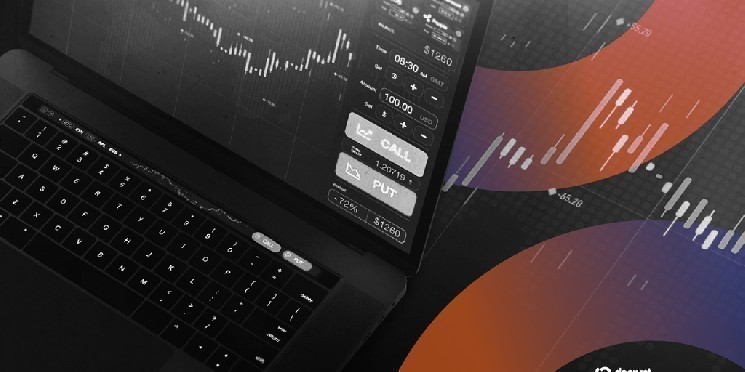By Taiki Maeda
Compiled by: TechFlow
As the market enters what many are calling the "late cycle," I believe there are significant risks that are rising. At this stage, it's crucial to think holistically about your portfolio and construct an "all-weather portfolio" that can handle a variety of market conditions. This portfolio not only protects you from market downturns but also allows you to capitalize on asymmetric opportunities.
As a humble investor, I've developed an investing framework that combines the best of both strategies and iterates based on my readers' preferences.
This is the Humble Farmer Portfolio framework (including the allocation ratio of each asset class):
Stablecoin income margin (30%-60%)
Holding high-quality cryptocurrency spot (30%-60%)
Short trading new perpetual contract decentralized exchange (Perp DEX) airdrop (1%-10%)
Stablecoin income margin (30%-60%)
Stablecoin returns typically compress during bear markets but perform exceptionally well during bull markets. A wise trader once told me, "If you're trading in DeFi, you're indirectly bullish on Altcoin, because good returns require a Altcoin market." As a stablecoin trader, the likelihood of losing money is very low (as long as the project doesn't go bust) because you're selling tokens to investors who blindly bought into the market.
By holding a healthy portion of stablecoins, you can potentially earn over 15% in a bull market while improving your sleep-adjusted returns (i.e., reducing anxiety caused by market volatility). The main advantage of holding stablecoins is that if the market enters a bear market, you can buy cryptocurrencies at a low price.
Holding high-quality cryptocurrency spot (30%-60%)
Many have proposed the "end of cycle" theory, arguing that strong assets like Bitcoin can continue to rise like the stock market. True compounding assets have also emerged in the crypto space, such as Binance Coin (BNB), which are more suitable for long-term holding rather than frequent trading. However, we must also accept the fact that if "this time is no different," all of these coins are likely to fall by at least 50% in a bear market.
Therefore, as humble investors, we must put aside our egos and select assets that we believe will outperform the market over the long term, while accepting that drawdowns may occur. This requires proper due diligence and research, and forming a conviction investment thesis, which is exactly what you are good at.
Airdrop of the new perpetual contract decentralized exchange (Perp DEX) (1%-10%)
Finding an edge in a liquid market becomes increasingly difficult over time. Over the past few years, I've realized that our advantage as retail investors lies in our ability to try new things and earn rewards through airdrops. How many people have achieved financial freedom through the Hyperliquid airdrop compared to those who are fighting each other in Altcoin?
I used to think Hyperliquid was the last large-scale perpetual swap decentralized exchange airdrop. Now, I think Lighter will also do well. After Lighter, people might say it was the last big airdrop in the perpetual swap space, and that new projects aren't worth investing in.
I challenge this view because even now, we still have many other primary and secondary blockchain projects with no users but extremely high market capitalizations. If perpetual swaps are the killer app in crypto, why can't there be multiple valuable perpetual swap decentralized exchange tokens? Is it possible to see 1-2 large airdrops per year? The probability is higher than you think.
So the question is, how should we plucking the fur? Where should we plucking the fur?
Hair-pulling strategy
“Just become a profitable perpetual swap trader.” Yes, but unfortunately, most people lose money trading perpetual swaps. Therefore, it’s better to reduce your risk exposure and develop a comprehensive strategy that benefits your entire portfolio.
I started trying a strategy with varying degrees of success, which was to short higher market cap tokens with very small positions while earning positive funding.
The goal of this strategy is not to imitate The Big Short and make huge profits by short tokens, but to accumulate airdrop points while replenishing other parts of the portfolio. Perpetual contract decentralized exchanges usually reward open interest rather than trading volume:
If we already have long exposure through spot positions, the overall portfolio may benefit from opening some short positions, especially since most perpetual swap tokens have positive funding (i.e., short yields a profit). Personally, I'd open a small short position in a token that I don't mind investing against for a few months. If the token's price rises by 50%, I can further increase my position in the opposite direction.
If the market goes up, you'll make more money from your spot position than from short short position. If the market continues to rise, your airdrop could be worth a lot more in the future. If the market goes into a bear market, at least you'll still get paid for short the falling asset (although the airdrop may be worth less).
People often joke about the billions of dollars of "fantasy projects" in the crypto space...why not profit by short them? In my experience, I've had some success short higher-market-cap tokens and increasing my position as the price rises. For example, if you have a $100,000 portfolio, you could start with a $500 short position at 1x leverage and gradually increase as the price rises.
This might not be the most exciting trade… until the airdrop tokens hit your wallet. For example, I made a few trades using Hyperliquid's closed beta in April 2023, deposited HLP, and received over $100,000 in airdrop rewards. I also made a few bad trades on Lighter between March and April 2025, but accumulated a ton of points (and was lucky enough to refer some great traders).
Every time I buy a new perpetual contract decentralized exchange, I regret not buying it early enough. Acting early can really bring benefits, and there may be some hidden signal in this.
Summary and Risks
Obvious risks include short a token that ultimately gains 100x, or skimping on a perpetual swap decentralized exchange that ultimately fails to launch (TGE). However, you can mitigate these risks by adjusting your position size and choosing the right tokens/platforms. I'm not saying you should never long a token, but I believe a "small short" strategy is a worthwhile default.
I don't want to recommend specific perpetual swap DEXs for short tokens or scalping, but @hansolar21 has built a great dashboard you can check out. Also, I encourage everyone to talk to the team and join the Discord group to get a feel for which projects are worth scalping and which ones are completely dead (DOA): perpetualpulse.xyz .
If you invest in a project like Lighter, your points will definitely be valuable, but it will be more difficult to earn them. A new perpetual swap DEX with fewer users will make it easier to earn points, but there's also the risk that its tokens may become worthless. It's always a trade-off! Perhaps the best strategy is to use multiple perpetual swap DEXs simultaneously to better understand the space.
Good luck, humble fellows!








